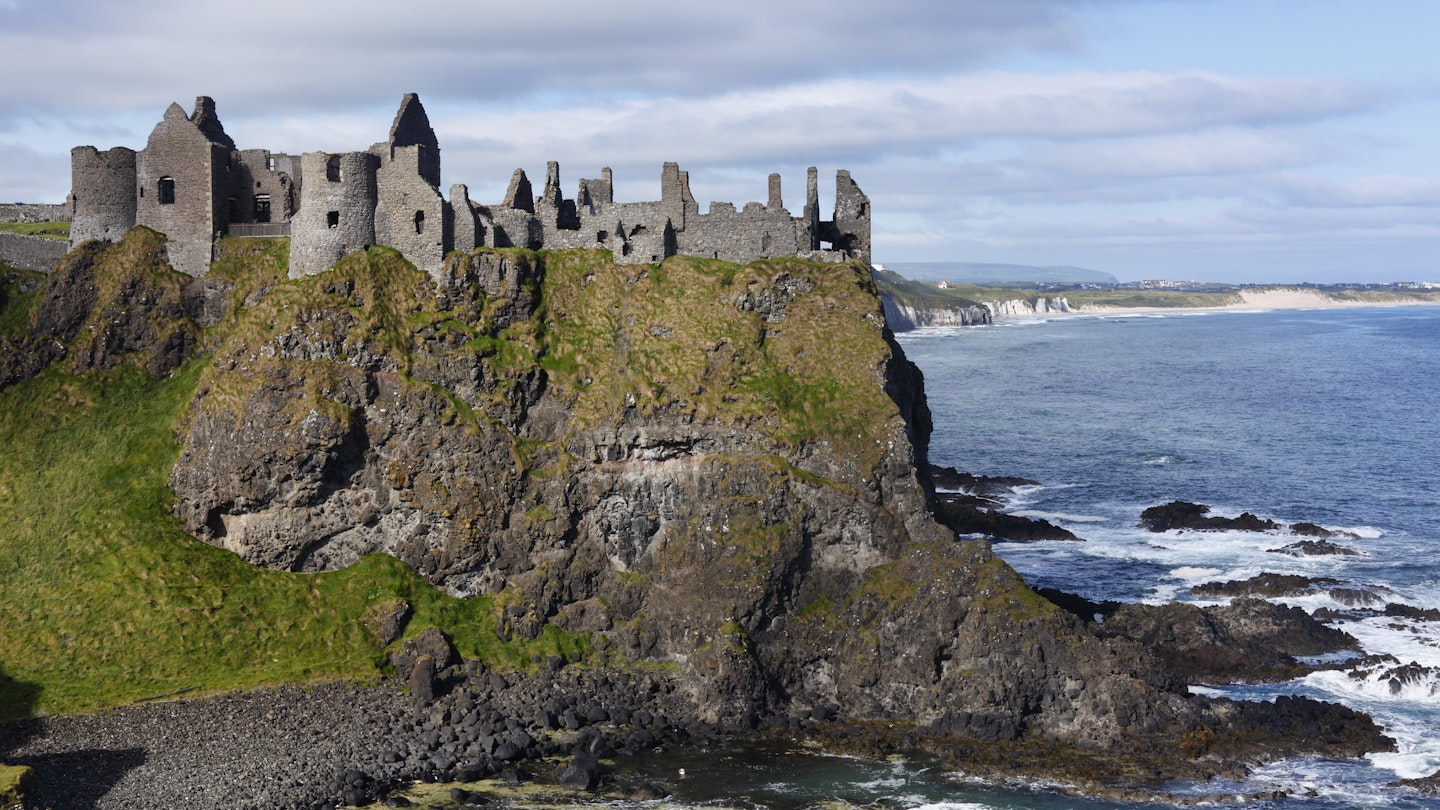Castles – whether ruined, regal, or otherwise – are a prominent feature of the Irish landscape. With approximately 3000 scattered across the country, there’s no shortage of history and grandeur on display.
Found high upon a perched crag or in the rolling green countryside, here are ten castles you should not miss while travelling in Ireland.
Ashford Castle, County Mayo
A contender for Ireland’s finest hotel is the 19th-century regal hunting and fishing lodge, created by Arthur Guinness (of stout fame) out of a castle first built in 1228 as the seat of the de Burgo family. Guinness’ Victorian-style extensions were added to the original building, which itself had been transformed in 1715 into a French-style chateau. In the late 19th century, the extensions were given a neo-Gothic makeover resulting in the stunning building you see today. Despite its eclectic styles, Ashford Castle stands out as a gem, featuring a five-star luxury hotel complete with all the trimmings, including a sumptuous spa and its own cinema.

Blarney Castle, County Cork
Proof of the power of a good yarn, crowds flock to this 15th-century castle to kiss the Blarney Stone, which supposedly imparts the gift of gab. While the stone is undoubtedly one of Ireland’s most popular tourist attractions, the remainder of this castle deserves exploration. Climb the spiral staircase and walk the battlements of this medieval structure, or vanish into its oft-ignored gardens: including the beautiful Fern Garden, the Harry-Potterish Poison Garden, and the landscaped nooks and crannies of the Rock Close.
Carrickfergus Castle, County Antrim
Ireland’s most impressive Norman castle is also one of its oldest: established in 1177 by John de Courcy right after he invaded Ulster. It remains the best preserved medieval structure in Ireland, even after being besieged by the Scots, Irish, English, and French. The castle’s central role in Irish history is explored in detail in the museum located within. Furthermore, the castle overlooks the harbour where William of Orange landed in 1690 on his way to fight the Battle of the Boyne.
Dunluce Castle, County Antrim
Location-wise, Dunluce is breathtaking – a ruined castle perched on a stone crag overlooking the sea. Built in the early 16th century by the McQuillan family, it was later seized in 1550 by the MacDonnell clan, who took on the title of earls of Antrim. The castle has witnessed significant drama: the military ship Girona wrecked on the rocks during the Spanish Armada of 1588, with only nine survivors among its crew. Moreover, in 1601, part of the castle collapsed into the sea along with seven servants.
Enniskillen Castle, County Fermanagh
In the 1420s, Hugh ‘the Hospitable’ Maguire established this remarkable castle on the banks of Lough Erne. Although he went on a pilgrimage to the Holy Land and died upon his return in 1428, the successive heads of the Maguire clan, later titled the lords of Fermanagh, improved Hugh’s original keep. The castle is now home to the fascinating Fermanagh County Museum and features the Lakelands Gallery, showcasing a preserved 1000-year-old block of butter.
Huntington Castle, County Carlow
Irish history has often made it difficult for castles to remain in the same family for centuries. However, the Esmonde family has held onto Huntington Castle since its construction in 1625. They have added various elements over the years, including Georgian terraces and Victorian extensions. Interestingly, within the old dungeon, a temple of the Fellowship of Isis was established by the current owner’s aunt and uncle in 1976, marking a unique fusion of history and spirituality.
Kilkenny Castle, Kilkenny City
Once the stronghold of the powerful Butler family, this massive castle is one of Ireland’s most visited heritage sites. Initially established in 1192 on a wooden tower built by the Anglo-Norman conqueror Richard de Clare (aka Strongbow), much of what you see today dates from the 19th century when it underwent a significant Victorian overhaul. The Long Gallery, featuring a painted timber roof and carved marble fireplace, is especially eye-catching.

Malahide Castle, County Dublin
For over 800 years until 1976, the Talbot family called Malahide Castle home, located on the edge of a picturesque suburban village in north County Dublin. The three-story tower house is the sole remnant of the original structure built in 1185; much of the remainder was added in subsequent centuries, showcasing the architectural evolution of the castle. The 45-minute guided tour takes visitors through much of the house, culminating in the Great Hall, where 11 members of the Talbot family dined before their tragic fates at the Battle of the Boyne in 1690.
Trim Castle, County Meath
If you require proof of the durability of a medieval castle, the mighty keep at Trim is it. Essentially unchanged since 1200, this 25m-high building rests on a Norman motte, surrounded by a 450m-long outer curtain wall. Visitors can explore inside, where models depict what the castle would have appeared in its prime. Interestingly, the site served as a filming location in the 1995 film Braveheart.
Cahir Castle, County Tipperary
Mighty Cahir Castle presents the quintessential image of a medieval stronghold, characterized by massive walls and a broad moat. Founded in 1142, it survived significant damage during cannonfire in 1599 and Cromwell’s takeover in 1650, remaining largely intact. Contemporary visitors benefit from this preservation, especially within the sparsely decorated Banqueting Hall, adorned with an impressive set of antlers.
This article provides a glimpse into the rich history and architectural beauty of Ireland’s castles, showcasing the diverse heritage of its landscape. For anyone captivated by history and culture, these castles offer an extraordinary opportunity to explore the past.





